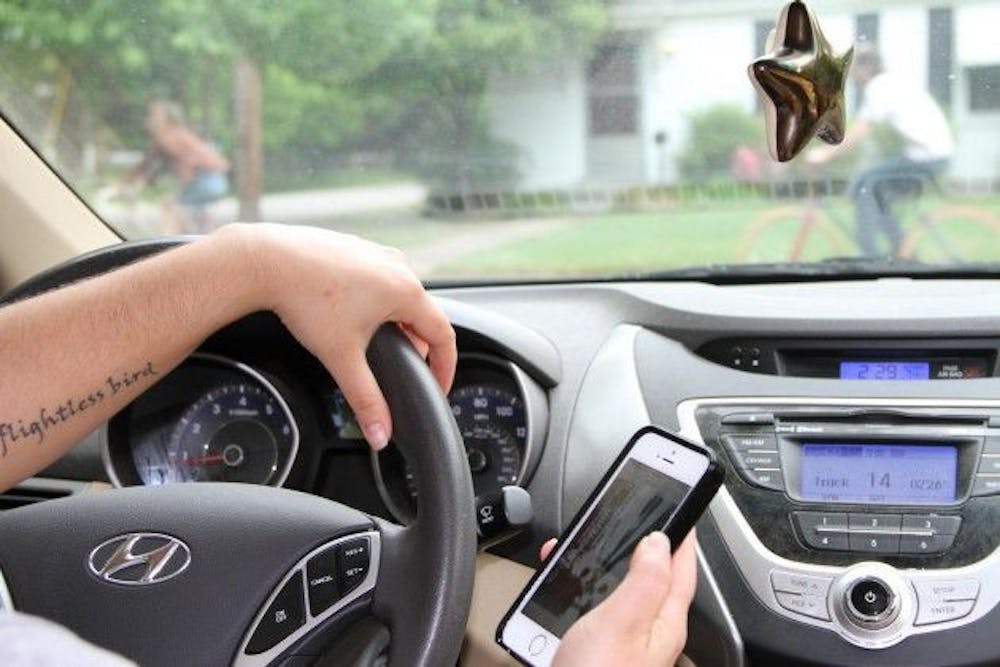Deena DeCourt vividly remembers the day of her daughter's fatal car crash. The wreck was a result of distracted driving.
However, a distracted driver did not hit DeCourt's daughter Kristin Rushing. Instead, Rushing, 25, was the distracted driver.
The day was July 16, 2012. Rushing was heading home from Wal-Mart with her two children, and they were traveling towards Henderson, Tenn. At the time, Jojo Rushing was six months old, and Addy Rushing was two years old. DeCourt's daughter was driving on a two-lane highway with her seatbelt unfastened while talking on her cell phone with a friend.
One of Rushing's children wanted her attention, so she turned around to see what was going on. When she did this, she went off the road and into a ditch.
As soon as she saw what was happening, she quickly tried to get back on the highway. However, she over-corrected, merged into on-coming traffic and crashed into another car.
"To this day, Addy will tell you, 'Mommy was thrown out the window.' All of the windows were gone. It's a miracle those kids were able to walk out of there with only minor bruises from their seatbelts," DeCourt said.
Rushing died on the way to the hospital.
Accidents that are caused by distracted drivers are an increasing issue in the U.S. A recent study conducted by the Centers for Disease Control estimates that more than nine people die each day from wrecks involving distracted drivers.
The number of distracted-driving-related accidents is rising. The National Center for Biotechnology Information conducted a study from 2005 to 2010 tracking the number of pedestrian and biker fatalities caused by distracted drivers.
Over the five-year period, they found that the number of pedestrian fatalities rose 31 percent, and the number of cyclist fatalities rose 24 percent.
According to the Center for Disease Control, there are three common types of distracted driving. People can be visually distracted (taking their eyes off of the road.) People can also be manually distracted (taking their hands off of the wheel.) And the last is a cognitive distraction (the mind's focus on driving is interrupted).
Cell phone usage is the all-encompassing form of distracted driving because it takes visual, manual and cognitive attention away from driving.
However, cell phones are not the only culprits that cause drivers to be distracted. The Department of Transportation lists activities of any kind that take a driver's attention away from driving.
Other than the use of cell phones, eating and drinking, talking to other passengers, fixing hair or makeup, adjusting the radio and even global positioning systems are common distractions.
According to Memphis Police Department patrolman Jimmy Gay, anyone can be pulled over and fined for these offenses in the city of Memphis. When there has been a wreck and the stories don't add up, the drivers are most often charged with the failure of "duty to devote full time and attention to the operating vehicle."
"It's really a catch-all term. The fine is less than $100, but it's the court costs that'll kill you," Gay said.
The Tennessee law regarding the use of cell phones states that bus drivers and anyone with a learner's permit or intermediate license can't use handheld or hands-free devices while driving, and no driver of any experience is allowed to text while driving.
Although texting is illegal in Tennessee, it doesn't stop all people from doing so.
Madison Murray, a 20-year-old international business student at the University of Memphis, admitted to occasionally putting on her makeup or talking on her cell phone while in the car but tries only to do so at stop lights.
"I only come close to having accidents when I don't take my (Attention Deficit Disorder) medicine. I zone out a lot more easily," Murray said.
Murray will only use her phone while driving if she receives multiple calls or texts from the same person. That's when she knows it's important.
In an effort to reduce the number of distracted drivers on the roads, phone companies are creating smart phone apps to prevent people, especially teens, from texting while driving.
Tim Norwood, 49, the general store manager of the AT&T store in Cordova, said in an effort to reduce the number of people who text while driving, most cell phones now have a function called "car mode."
"It's like airplane mode, except it's for your car," he said. "When someone sends you a text while you're driving, it will automatically send a response to the other person. It is customizable, but it will let people know that you're driving and that you'll get back to them when you can."




